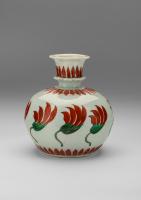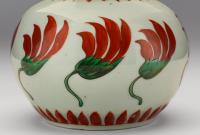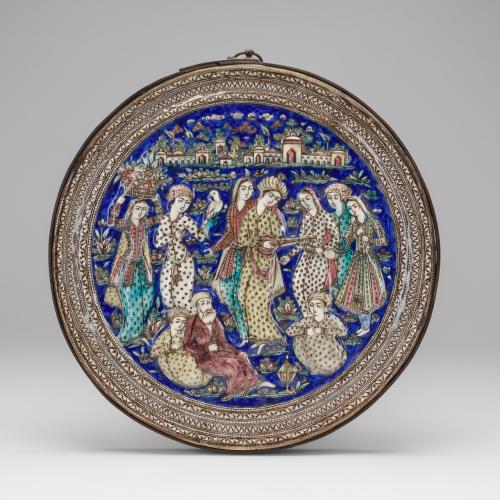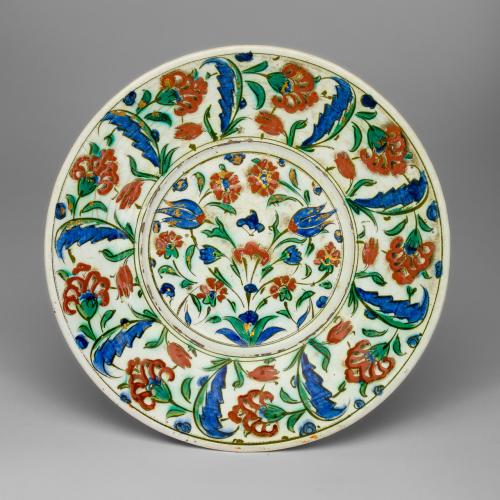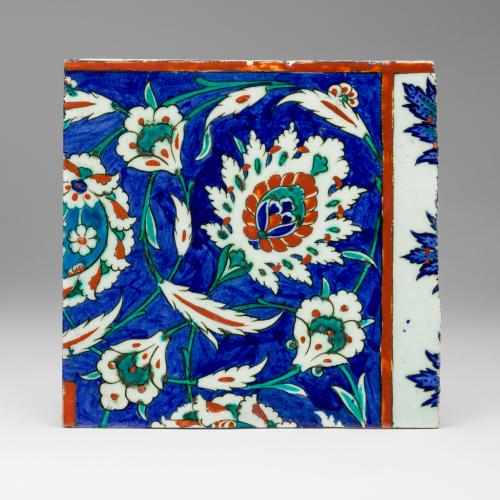
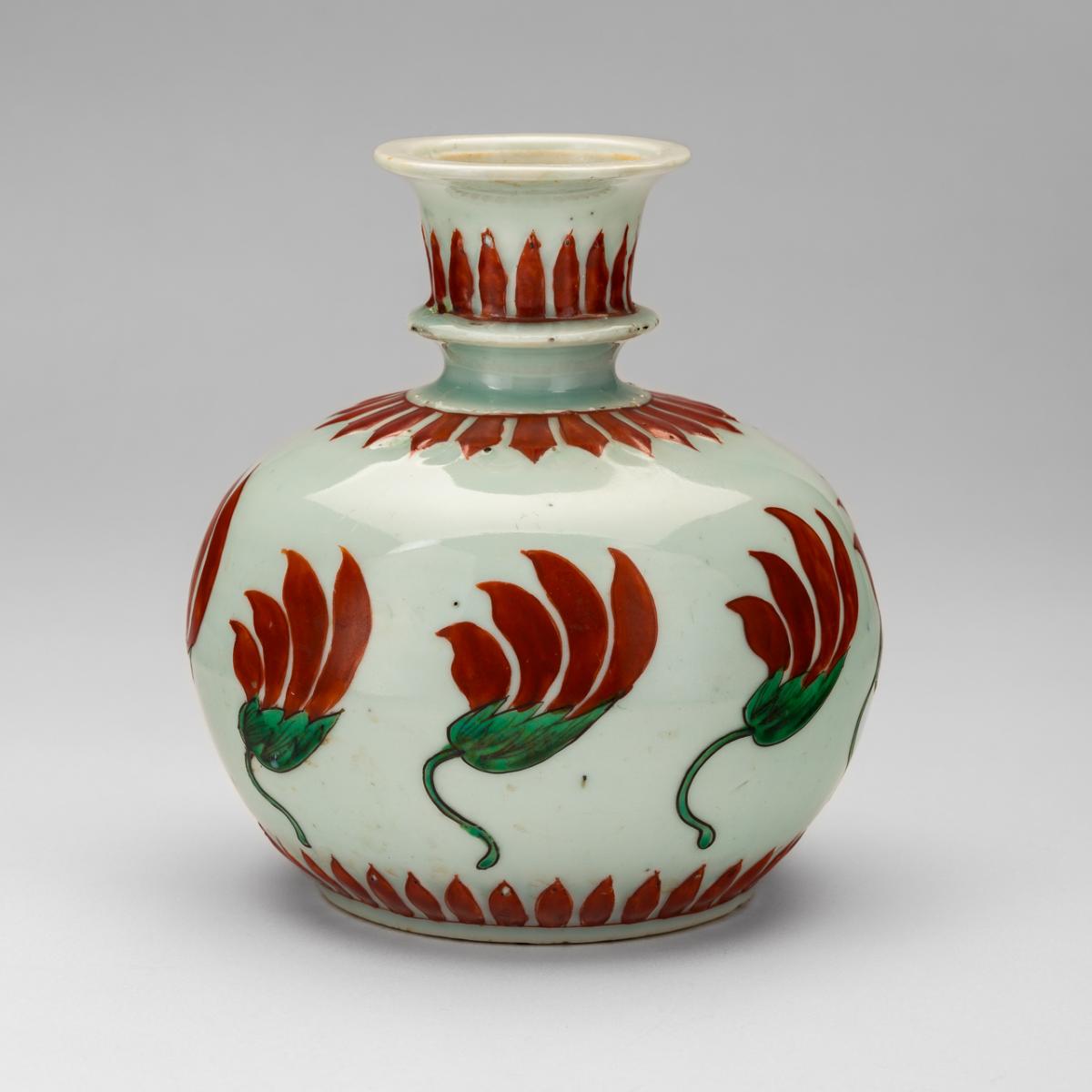
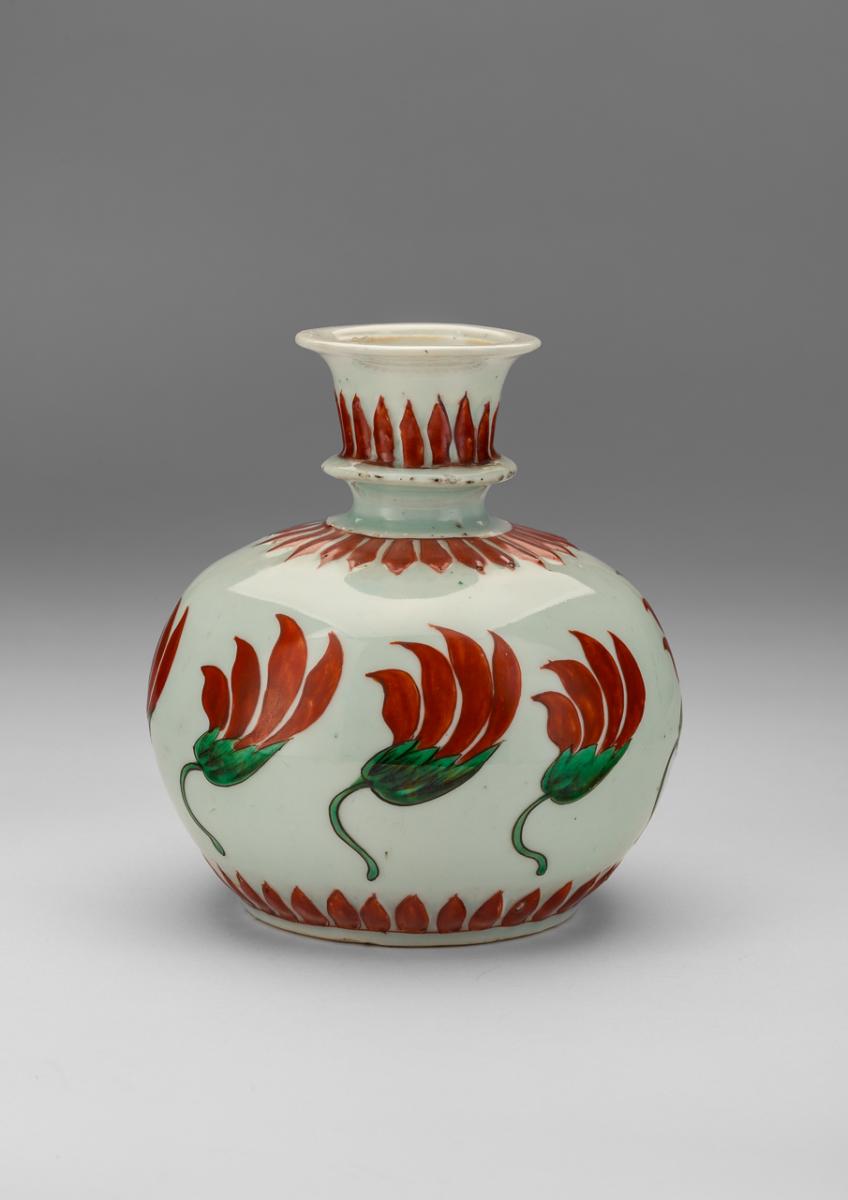
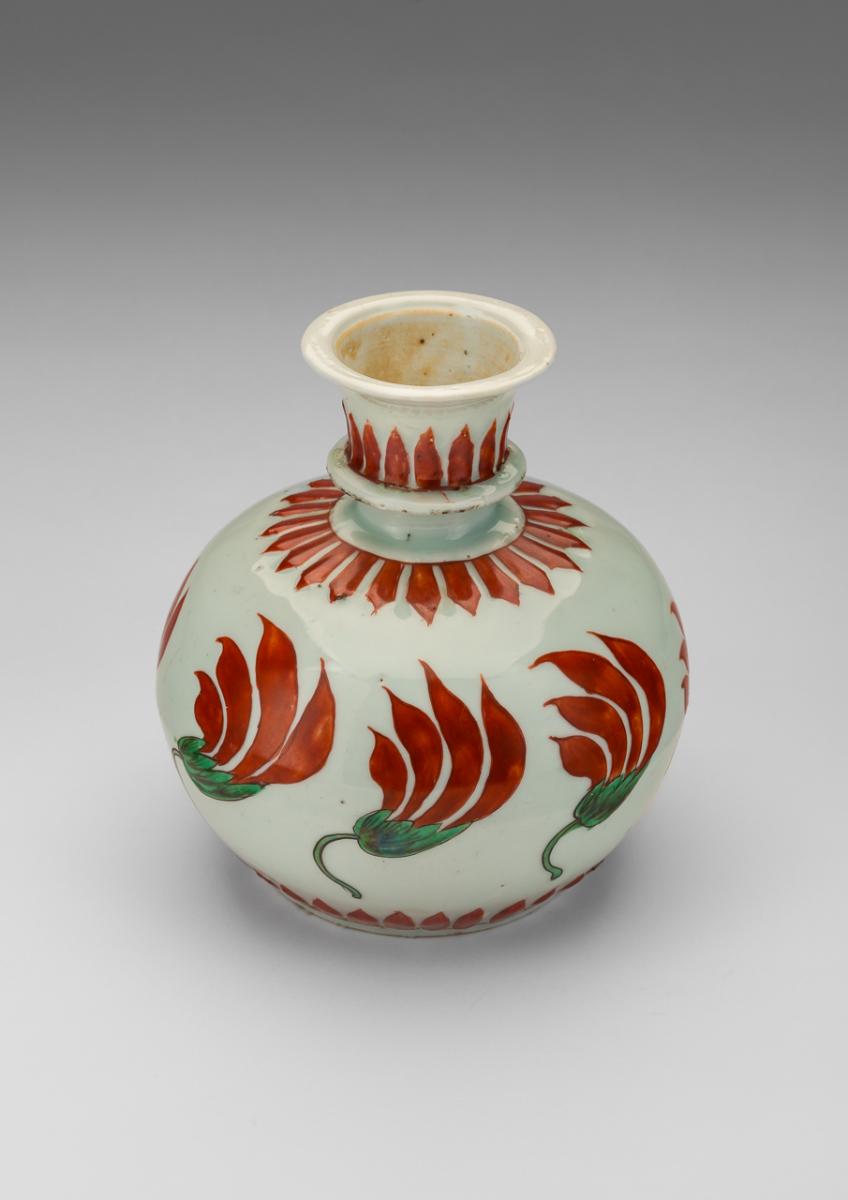
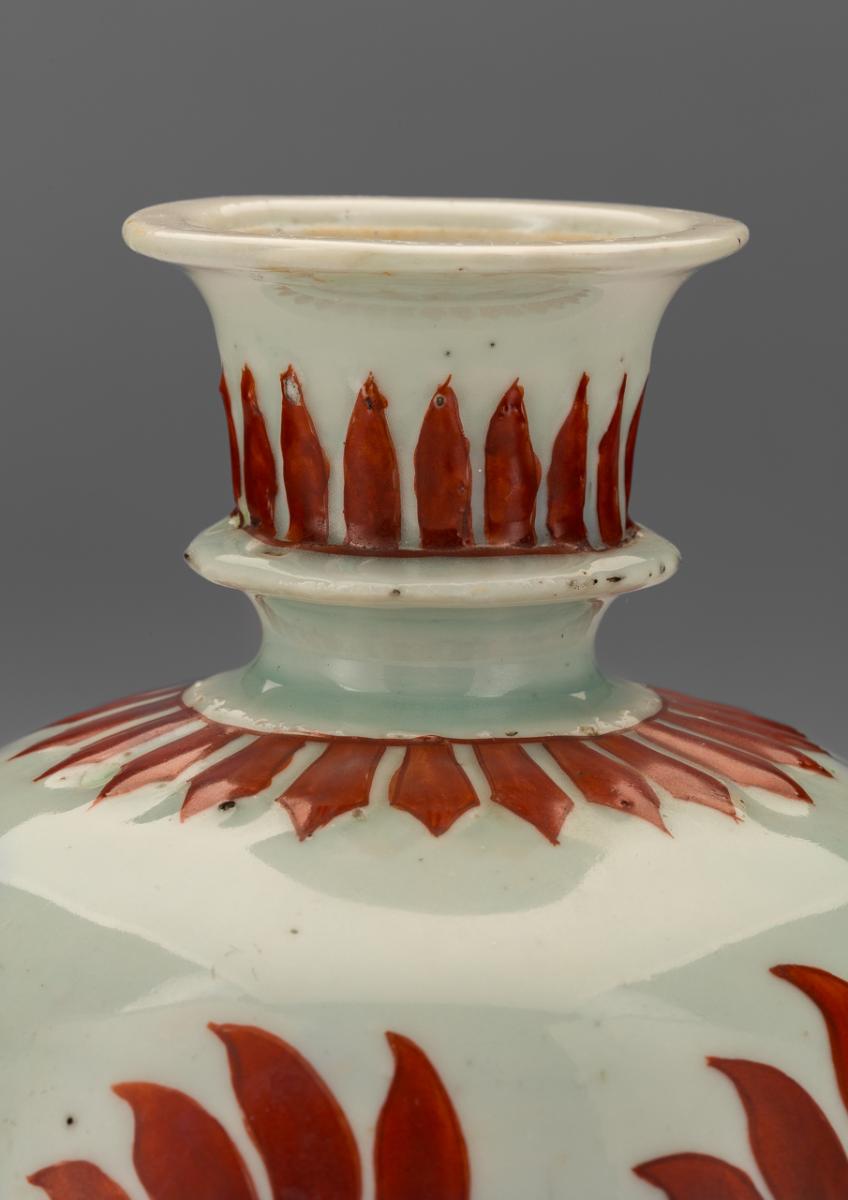
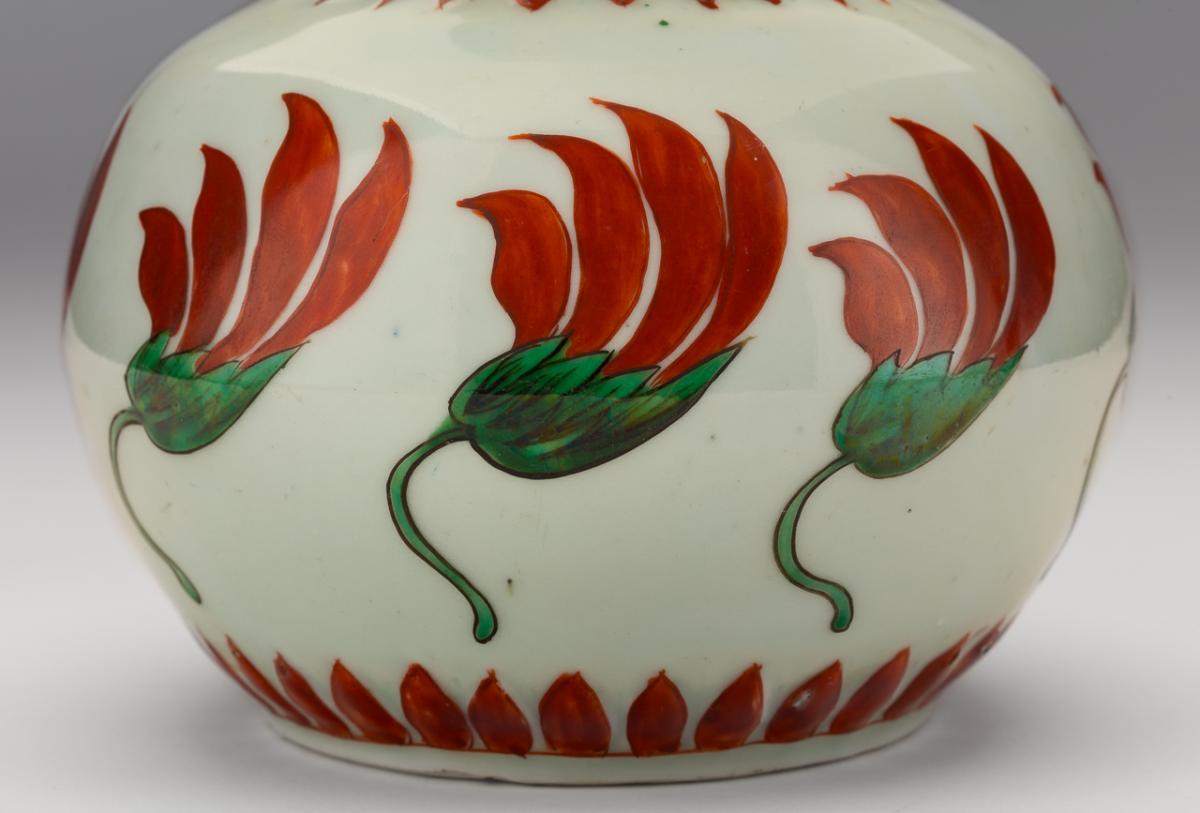
Price on application
This object is eligible for a Certificate of BADA Provenance
The BADA Standard
- Since 1918, BADA has been the leading association for the antiques and fine art trade
- Members are elected for their knowledge, integrity and quality of stock
- Our clients are protected by BADA’s code of conduct
- Our dealers’ membership is reviewed and renewed annually
- Bada.org is a non-profit site: clients deal directly with members and they pay no hidden fees
Unique Kangxi Huqqa Base Made for the Indian Market.
China, Kangxi period (1661-1722).
17.5cm high, 15.5cm diameter.
Porcelain decorated with polychrome enamels over clear, colourless glaze.
Provenance: European private collection for at least 30 years.
The globular form of this huqqa base derives from 17th century Indian prototypes which were typically made from metal and glass. The collar of red spears derives from ornamentation seen on bidri huqqa bases, such as those pictured in Zebrowski's Gold, Silver, and Bronze from Mughal India.1 Whilst the colour palate and floral ornamentation of the present huqqa base is unique, the bright white glaze and distinctive finish of the base is comparable to examples from Kangxi era China.
The eight red flowers which adorn the huqqa base are those of the palash tree (Butea monosperma), a species of Buteaalso known as dhak, flame of the forest, and bastard teak. The palash plant is sacred in Hinduism: its use by priests in sacrifices is discussed in the Yajurveda; in Himachal Pradesh it is used in funeral pyres; in Telangana it is used in the worship of Shiva on Shivaratri; its twigs are used to light sacred fires on the occasion of Vastu shanti. As it is an early sign of spring, blooming in late winter with such eye-catching colours, it has become a symbol of renewal, fertility, and lifeforce. The palash tree also has important practical uses. It is home to the lac beetle, whose excreta are collected from the branches of the palash tree and used to make lacquer. Furthermore, the dried flowers are used to create bright yellow dyes, for use during Holi and for applying as a bindi.2
1 Zebrowski, Mark. Gold, Silver, and Bronze from Mughal India. London: Alexandria Press/ Laurence King, 1997. Pp. 229-234. Cat. 371, 375, 376, 379, 389.
2 Jaiswal, Uma. 'Flame of the Forest/Palash', Sacred Trees of Bhu. Retrieved online via http://sacredtreesbhu.com/index.php?id=FlameOfTheForest on 01/05/2024.
The BADA Standard
- Since 1918, BADA has been the leading association for the antiques and fine art trade
- Members are elected for their knowledge, integrity and quality of stock
- Our clients are protected by BADA’s code of conduct
- Our dealers’ membership is reviewed and renewed annually
- Bada.org is a non-profit site: clients deal directly with members and they pay no hidden fees



